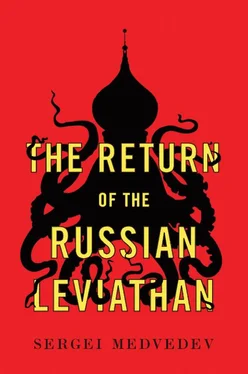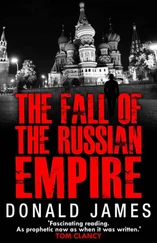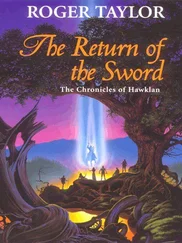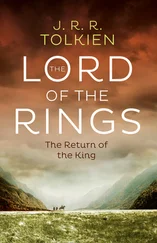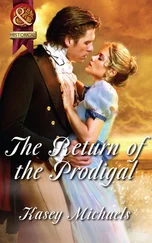Almost a year passed. It was December 1938. In the camp they prepared for the New Year by putting up a banner that read: ‘In the USSR labour is a matter of honour, a matter of glory, a matter of valour and heroism.’ In honour of the holiday, they turned the dining room into a club, decorating the doors with fir twigs and putting up a poster for a lecture, ‘To the Victory of Communism! The USSR in Eighty Years’ Time’, which was to be delivered by a political officer from Ukhta. On the eve of the holiday, Gena was returning with a group of convicts to the camp through a pathway in the snow that they had cleared by logging; they were dragging through the forest brushwood and kindling for the stove in the barrack block. It was three o’clock in the afternoon, but it was already getting dark and the crimson sunset was burning low; as evening approached, the frost was biting sharper. Even after a year, Gena couldn’t get used to the cold, but now to the usual shivering was added weakness and indifference. He looked around and sat down on a large spruce on the edge of the path. The convoy guard was still some way off and before he could run up and strike him with his rifle butt Gena could take a short break.
Gena looked up. Above the tops of the fir trees in the darkening sky shone the colourless, indifferent disc of the moon. He closed his eyes and suddenly he could imagine life under Communism eighty years hence. He saw a huge, well-lit city, spread out like an electric blot, towards which he was slowly descending, as if he were on a parachute. The city came closer and soon filled his whole field of vision. In its arteries there flowed an endless stream of cars, huge coloured billboards twinkled, there were clusters of tall towers with lit windows and, looking closely, he could see crowds of people on the streets and boulevards and strings of lights on the trees. The convoy guard must be close; any second now he would be hit in the stomach, and Gena curled up ever tighter.
‘Get up!’ He felt a careful hand on his shoulder. Gena remained still.
‘Get up, you’ll freeze to death!’ repeated a woman’s voice. Gena opened his eyes and saw two girls bending over him. He was sitting on a frozen bench on Tverskoi Boulevard, under an old lime tree. All around there were trees hung with lights. Gena looked around in amazement. The girls burst out laughing and ran off. All around there was a fairytale light, there were figures of angels and butterflies standing in the snow, Father Christmas and his reindeer, made of strings of lights and being lit up by the flashlights of cameras, as dozens of people were having their photos taken among these models. Gena scooped up a handful of fresh snow and swallowed a few fistfuls. His head was aching, the lights were swimming in front of his eyes, his broken ring finger was throbbing. He got up from the bench and slowly made his way along the boulevard in the direction of the square where the holiday music was playing, the huge numbers 2017 glowed, and it seemed as if Communism had finally arrived.
Banknotes sometimes have hidden meanings. If you look at the Russian five-hundred-rouble bill, you’ll see on it a picture of the famous Solovetsky Monastery, a prison monastery with a history going back over many centuries, situated on the Solovetsky Islands in the White Sea, in the North of Russia. And if it’s an older banknote, issued before 2011, then you will see rising over the churches not cupolas but wooden boards. This indicates that it is not the monastery that is shown, but the Solovetsky Special Designation Prison Camp, one of the most terrifying Soviet labour camps, a predecessor of the GULAG [12] The system of prison camps established across the Soviet Union under Stalin. GULAG is an acronym for Glavnoe upravlenie lagerei , the Main Directorate of Camps.
system and, indeed, of the Nazi concentration camps, where the inmates were ordered at the end of the 1920s to cover up the cupolas with wooden boards. These bills are still in circulation, knocking around in our hands, our pockets and our wallets, these symbols of the GULAG that hardly anyone recognizes, like ghosts come to visit us from a different reality, from the black hole of our history and our collective memory.
This image is shown in the book by the literary critic and historian Alexander Etkind, Warped Mourning: Stories of the Undead in the Land of the Unburied , translated into Russian from English. A psychologist, literary critic and cultural historian, and the author of such intellectual bestsellers as Eros of the Impossible: The History of Psychoanalysis in Russia ; Whip: Sects, Literature and Revolution ; and Internal Colonization: Russia’s Imperial Experience , Etkind writes in Warped Mourning about the practice of collective memory and about the Stalinist repressions in the Soviet and post-Soviet consciousness. He poses what could be the key question for our political history and social psychology: why is the fundamental catastrophe of Stalin’s terror, which befell Soviet society in the very heart of its history – for thirty years, from the mid-1920s until the mid-1950s, and accounting for tens of millions of victims – still not comprehended and conceptualized by our society and our politics? Why have we not rid ourselves of this trauma – named the victims, judged the executioners? And, what’s more, why are the torturers justified in modern historical and political narratives by the self-appointed ‘patriots’? In other words, why is Russian mourning so ‘warped’?
Shortly before his death, the poet Joseph Brodsky expressed his surprise in an interview:
It seemed to me that the greatest product of the Soviet system was that we all – or many of us, at least – considered ourselves to be victims of a terrible catastrophe, and even if this didn’t create a brotherhood it did at least produce a feeling of compassion, of pity for each other. And I hoped that through all the changes this feeling of compassion would survive and live on. Because our monstrous experience, our terrifying past, unites people – the intelligentsia, at least. But this didn’t happen. [13] https://www.krugozormagazine.com/show/Brodskiy.2107.html . Krugozor magazine (in Russian), February 2014.
In actual fact, if in postwar Germany the memory of their catastrophe became a point of consensus and the nation united around the slogan, nie wieder , ‘never again’, then in Russia the memory of the repressions divided society into those who remembered and those who chose to forget – or even denied or justified the repressions: ‘Those were difficult times’; ‘But we won the War’; ‘When you cut down trees, splinters fly.’
In Russia there are ‘wars of memory’ around the key events of our twentieth-century history: the revolution of 1917, the repressions of 1937, the Victory over Germany in 1945 and the collapse of the USSR in 1991; but far from uniting people in grief or pride, each of these dates drives wedges between friends, colleagues and family members. In reality, the Civil War in Russia has not let up for a single day but carries on in our collective memory. At the heart of our national consciousness, a black lacuna has formed, a sucking void, which the majority of people manage to skate around. But then occasionally bones rise to the surface, like on the bank of the Kolpashevo River near the Siberian city of Tomsk, where on 1 May 1979 the River Ob flooded and burst its banks, opening up a mass grave of victims who had been shot in 1937. Thousands of well-preserved corpses were washed out; and the local authorities ordered that they be chopped up by the propellers of the river tugs and washed away.
What is the source, what is the anamnesis of this ‘anaesthesia dolorosa’, the insensitivity of our nation to the fundamental trauma of the Stalinist terror? Why is it that Germany could acknowledge the catastrophe of Nazism and carry out the difficult task of self-cleansing, while Russia today is further than ever from comprehending Stalinism? Etkind maintains that there are a few reasons. First, the sheer number of genocides and democides that were caused by Stalinism: from collectivization and the Holodomor [14] In 1932–3, Stalin ordered the deliberate creation of a manmade famine in Ukraine, which wiped out millions of Ukrainians. The word Holodomor is the Ukrainian (and Russian) word for famine.
in Ukraine, to the deportation of whole peoples (the Chechens, the Kalmyks, the Crimean Tatars, and many others); from the Great Terror of 1937–8 to the antisemitic ‘struggle with cosmopolitanism’ in the last years of Stalin’s life, from 1949–53. The Soviet terror struck at the most diverse ethnic, professional and territorial groups.
Читать дальше
